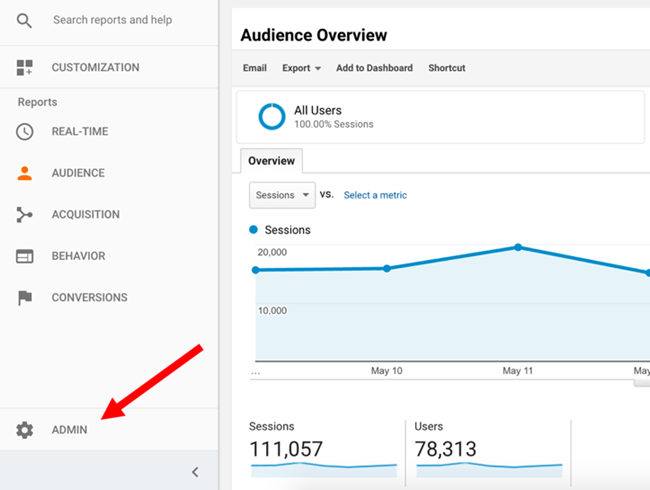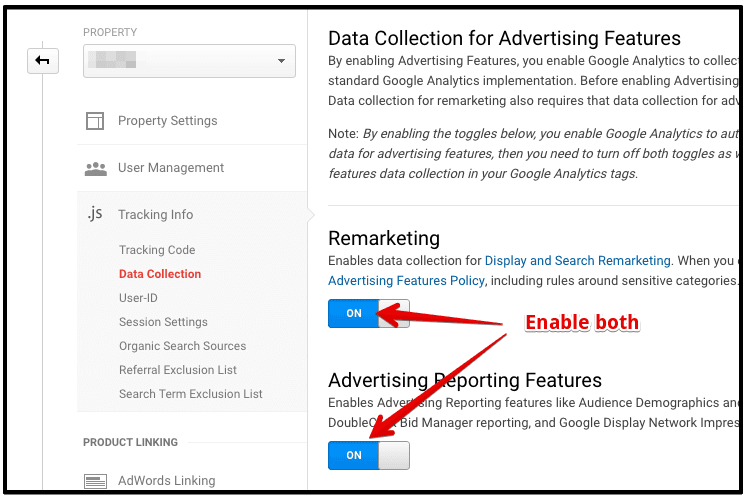How to Utilize Remarketing In Google Analytics for Your Service
Wiki Article
Maximize Your ROI With Remarketing in Google Analytics
By harnessing the power of user information and customizing advertisements to particular audience sectors, organizations can dramatically intensify their conversion rates. The journey to making the most of ROI via remarketing is a nuanced path led with insights and possibilities that can improve the trajectory of your advertising and marketing endeavors.Understanding Remarketing in Google Analytics
Comprehending remarketing in Google Analytics is essential for enhancing your digital advertising and marketing strategy. Remarketing enables you to target users who have previously seen your site or communicated with your app, providing them with tailored advertisements as they surf various other websites or make use of other applications within the Google Show Network. This strategy assists maintain your brand top of mind and urges users to return to your website, ultimately boosting the probability of conversion.By using Google Analytics, you can track the performance of your remarketing projects, gaining useful insights right into user actions, interaction, and conversions. This data allows you to refine your messaging, targeting, and bidding strategies to boost the general efficiency of your projects.
In addition, recognizing the different sorts of remarketing checklists available in Google Analytics, such as common, dynamic, and similar audiences, allows you to develop highly segmented and customized campaigns customized to details individual sectors. This degree of granularity can dramatically enhance the importance and influence of your remarketing efforts, eventually maximizing your return on investment.
Establishing Up Remarketing Lists
To effectively carry out remarketing campaigns in Google Analytics, the preliminary step entails configuring and producing remarketing checklists targeting particular user segments based on their interactions with your internet site or application. By setting up remarketing listings, you can customize your marketing efforts to reach individuals that have already revealed interest in your services or products.To begin, browse to the Admin area of your Google Analytics account and select the Residential property where you intend to produce the remarketing listing. After that, under the Residential property column, click on 'Audience Definitions' and select 'Audiences.' Next, click on the red 'New Target market' switch and select 'Create New' to define the criteria for your remarketing list.

Crafting Effective Remarketing Advertisements

When crafting your advertisements, focus on developing attention-grabbing headings and compelling visuals that attract attention to potential clients. Integrate solid calls-to-action that motivate users to revisit your website and finish a wanted action. Utilize dynamic remarketing to reveal tailored ads featuring product and services that customers have previously checked out on your site.
Additionally, guarantee that your advertisements are mobile-friendly considering that a substantial section of internet web traffic comes from mobile phones. Test different ad variations to recognize which messages and layouts drive the ideal results. By continually refining and optimizing your remarketing advertisements based on efficiency data, you can optimize their performance and boost your return on financial investment.
Analyzing Remarketing Efficiency
Through Google site web Analytics, marketers can track the efficiency of their remarketing campaigns in real-time, permitting them to determine fads, patterns, and areas for improvement without delay. By examining the data, online marketers can establish which ads are executing well, which target market sectors are reacting positively, and which networks are driving one of the most conversions. This level of granularity makes it possible for online marketers to make data-driven choices to maximize their remarketing projects for better outcomes.
Enhancing ROI With Remarketing
Evaluating remarketing information in Google Analytics enables marketing experts to look at this website determine possibilities for enhancing return on financial investment (ROI) with tactical adjustments - What Is “Remarketing” In Google Analytics?. To maximize ROI with remarketing, it is important to recognize the habits of your audience. By analyzing individual interactions, such as the pages they saw, the items they checked out, or the activities they handled your website, you can tailor your remarketing projects much more efficientlySegmenting your target market based upon their actions permits you to create personalized and targeted ads that are most likely to resonate with them. By revealing relevant ads to particular segments of your audience, you can boost the opportunities of conversion and eventually improve your ROI.
Moreover, checking various ad creatives, messaging, and deals can assist recognize what resonates best with your audience. A/B screening permits you to trying out various aspects of your why not check here ads to determine what drives the highest possible engagement and conversion rates.
Verdict
To conclude, optimizing ROI with remarketing in Google Analytics requires a tactical technique to evaluating user habits, segmenting target markets, developing tailored ads, and maximizing project efficiency. By leveraging data-driven understandings and evaluating different techniques, companies can enhance their remarketing initiatives to drive higher involvement and conversion prices. This methodical technique guarantees that sources are efficiently assigned towards taking full advantage of returns on financial investment in remarketing projects.Next off, click on the red 'New Target market' button and pick 'Develop New' to define the criteria for your remarketing checklist.
By constantly refining and maximizing your remarketing ads based on efficiency information, you can maximize their effectiveness and boost your return on investment.
By delving right into these insights, marketers can acquire a thorough understanding of exactly how their remarketing efforts are reverberating with their target audience and driving conversions. To optimize ROI with remarketing, it is critical to comprehend the behavior of your audience.In verdict, maximizing ROI with remarketing in Google Analytics needs a calculated method to assessing user habits, segmenting audiences, developing tailored ads, and enhancing project efficiency.
Report this wiki page